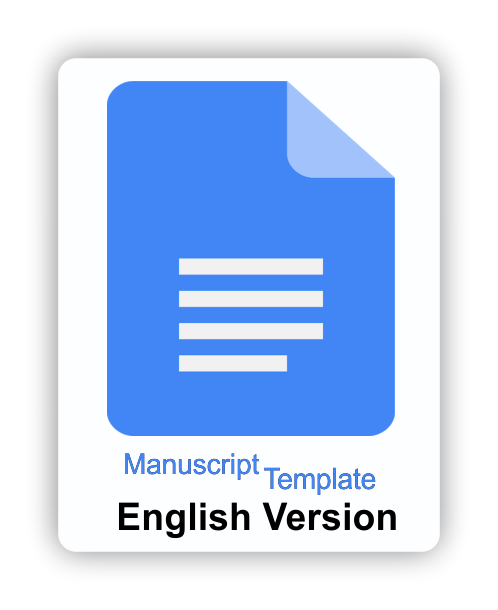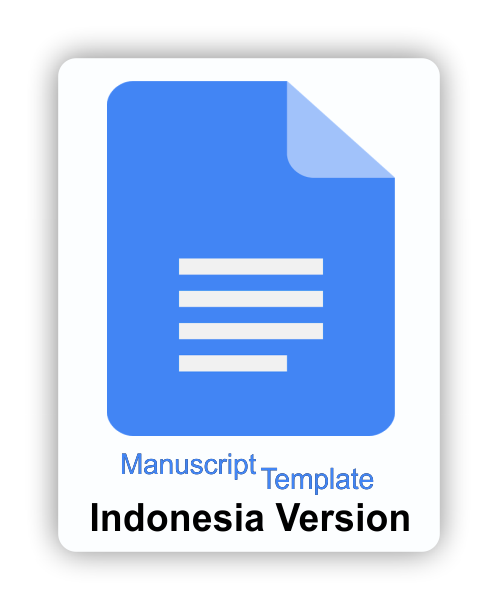Social media learning strategies, teachers' digital competencies and online learning quality: A correlational study
Downloads
Alghamdi, A. K. H., & Alanazi, F. H. (2019). Creating scientific dialogue through social media: exploration of Saudi pre-service science teachers. Research in Science and Technological Education, 37(4), 471–491. https://doi.org/10.1080/02635143.2019.1570107
Ariawan, I. P. W., Giri, M. K. W., & Divayana, D. G. H. (2019). Preliminary design of CIPP-SAW evaluation model in measuring ICT-based learning effectiveness in health colleges. Journal of Physics: Conference Series, 1402, 1-7. https://doi.org/10.1088/1742-6596/1402/2/022077
Bannister, J., Neve, M., & Kolanko, C. (2020). Increased educational reach through a microlearning approach: Can higher participation translate to improved outcomes? Journal of European CME, 9(1), 1-5. https://doi.org/10.1080/21614083.2020.1834761
Bergum, J, L., Leming, T., Johannessen, B. H., & Solhaug, T. (2023). Competence in digital interaction and communication a study of first-year preservice teachers' competence in digital interaction and communication at the start of their teacher education. Teacher Educator, 58(3), 270–288. https://doi.org/10.1080/08878730.2022.2122095
Betlem, E., Clary, D., & Jones, M. (2019). Mentoring the mentor: Professional development through a school-university partnership. Asia-Pacific Journal of Teacher Education, 47(4), 327–346. https://doi.org/10.1080/1359866X.2018.1504280
Bistari, B. (2018). Konsep dan indikator pembelajaran efektif. Jurnal Kajian Pembelajaran dan Keilmuan. 1(2), 1-13. https://doi.org/10.26418/jurnalkpk.v1i2.25082
Cowan, K., & Kostyk, A. (2023). The influence of luxury brand personality on digital interaction evaluations: A focus on European and North American markets. International Marketing Review. 41(2), 386-410. https://doi.org/10.1108/IMR-02-2022-0044
Creswell, J. W. (2009). Research design: Qualitative, quantitative, and mixed methods approaches (pp. 1–296). SAGE Publications.
Dai, Z., Wang, M., Liu, S., & Tang, L. (2020). Design and the technology acceptance model analysis of instructional mapping. Computer Applications in Engineering Education, 28(4), 892–907. https://doi.org/10.1002/cae.22261
Davidson, S. M., Grunau, Z., Marcovitz, D., Gerdner, O. A., Stoklosa, J., & Vestal, H. S. (2019). Narrative podcasts as a teaching tool in psychiatry. Academic Psychiatry, 43(3), 275–279. https://doi.org/10.1007/s40596-019-01062-6
Dey, P., & Bandyopadhyay, S. (2019). Blended learning to improve quality of primary education among underprivileged school children in India. Education and Information Technologies, 24(3), 1995–2016. https://doi.org/10.1007/s10639-018-9832-1
Griffiths, M. A., Goodyear, V. A., & Armour, K. M. (2022). Massive open online courses (MOOCs) for professional development: Meeting the needs and expectations of physical education teachers and youth sport coaches. Physical Education and Sport Pedagogy, 27(3), 276–290. https://doi.org/10.1080/17408989.2021.1874901
Grigorescu, A., Pí®rciog, S., & Lincaru, C. (2020). Self-employment and unemployment relationship in Romania-insights by age, education and gender. Economic Research-Ekonomska Istrazivanja , 33(1), 2462–2487. https://doi.org/10.1080/1331677X.2019.1689837
Gulzar, M. A., Ahmad, M., Hassan, M., & Rasheed, M. I. (2021). How social media use is related to student engagement and creativity: investigating through the lens of intrinsic motivation. Behaviour and Information Technology, 41(11), 2283–2293. https://doi.org/10.1080/0144929X.2021.1917660
Huang, Q. (2022). Teachers' intention to use an electronic learning management system in the long term. Interactive Learning Environments, 31(10), 1–14. https://doi.org/10.1080/10494820.2022.2062607
Ibrahim, M., Harini, H., & Susilaningsih, S. (2019). The effect of teachers, work environment, and work satisfaction on the performance of IPS Teachers of the Demak Regency. International Journal of Multicultural and Multireligious Understanding, 6(2), 798-809. https://doi.org/10.18415/ijmmu.v6i2.785
Inkeeree, K. H., Mahmood, M. H. H., Haji-Mohd-Noor, S. S., Kasa, M. D., Yaakob, M. F. M., Omar-Fauzee, M. S., & Sofian, F. N. R. M. (2020). Increasing teachers' self-efficacy through regular teaching and learning supervision. Universal Journal of Educational Research, 8(7), 3002–3013. https://doi.org/10.13189/ujer.2020.080729
Instefjord, E., & Munthe, E. (2016). Preparing pre-service teachers to integrate technology: An analysis of the emphasis on digital competence in teacher education curricula. European Journal of Teacher Education, 39(1), 77–93. https://doi.org/10.1080/02619768.2015.1100602
Kemdikbud. (2023). Rapor pendidikan Indonesia Tahun 2023. Merdeka Belajar, 2023. https://raporpendidikan.kemdikbud.go.id/login
Khachan, A. M., & í–zmen, A. (2019). IMSSAP: After-school interactive mobile learning student support application. Computer Applications in Engineering Education, 27(3), 543–552. https://doi.org/10.1002/cae.22096
Lee, J. C. K., Wan, Z. H., Hui, S. K. F., & Ko, P. Y. (2019). More student trust, more self-regulation strategy? Exploring the effects of self-regulatory climate on self-regulated learning. Journal of Educational Research, 112(4), 463–472. https://doi.org/10.1080/00220671.2018.1553840
Lee, Y. J. (2023). Language learning affordances of Instagram and TikTok. Innovation in Language Learning and Teaching, 17(2), 408–423. https://doi.org/10.1080/17501229.2022.2051517
Liu, Y. H., & Yu, F. Y. (2019). Supporting active learning and formative evaluation via teaching-by-questioning in classrooms: Design, development, and preliminary evaluation of an online learning system. Interactive Learning Environments, 27(5–6), 841–855. https://doi.org/10.1080/10494820.2018.1489858
McNamara, S., Healy, S., & Haegele, J. (2021). Use of social media for professional development by physical educators who teach students with disabilities. International Journal of Disability, Development and Education, 68(5), 690–701. https://doi.org/10.1080/1034912X.2019.1699649
Meroño, L., Calderón, A., Arias-Estero, J. L., & Méndez-Giménez, A. (2018). Percepción de alumnado y profesorado de Educación Primaria sobre el aprendizaje de los estudiantes basado en competencias. Cultura y Educacion, 30(1), 1–37. https://doi.org/10.1080/11356405.2018.1436796
Pittman, M., & Haley, E. (2023). Cognitive load and social media advertising. Journal of Interactive Advertising, 23(1), 33–54. https://doi.org/10.1080/15252019.2022.2144780
Porat, E., Blau, I., & Barak, A. (2018). Measuring digital literacies: Junior high-school students' perceived competencies versus actual performance. Computers and Education 126, 23-36. https://doi.org/10.1016/j.compedu.2018.06.030
Prestridge, S., Tondeur, J., & Ottenbreit-Leftwich, A. T. (2019). Insights from ICT-expert teachers about the design of educational practice: The learning opportunities of social media. Technology, Pedagogy and Education, 28(2), 157–172. https://doi.org/10.1080/1475939X.2019.1578685
Pusey, M. (2018). The effect of puzzle video games on high school students' problem-solving skills and academic resilience. CHI PLAY 2018 - Proceedings of the 2018 Annual Symposium on Computer-Human Interaction in Play Companion Extended Abstracts, 63–69. https://doi.org/10.1145/3270316.3270597
Quadir, B., Yang, J. C., & Chen, N. S. (2022). The effects of interaction types on learning outcomes in a blog-based interactive learning environment. Interactive Learning Environments, 30(2), 293–306. https://doi.org/10.1080/10494820.2019.1652835
Raikes, A., Sayre, R., Davis, D., Anderson, K., Hyson, M., Seminario, E., & Burton, A. (2019). The measuring early learning quality & outcomes initiative: Purpose, process and results. Early Years, 39(4), 360–375. https://doi.org/10.1080/09575146.2019.1669142
Roohani, A., & Vincheh, H. M. (2023). Effect of game-based, social media, and classroom-based instruction on the learning of phrasal verbs. Computer Assisted Language Learning, 36(3), 375–399. https://doi.org/10.1080/09588221.2021.1929325
Ruddy, C., & Ponte, F. (2019). Preparing students for university studies and beyond: A micro-credential trial that delivers academic integrity awareness. Journal of the Australian Library and Information Association, 68(1), 56–67. https://doi.org/10.1080/24750158.2018.1562520
Saluky, S., Riyanto, O. R., & Rahmah, S. (2022). Digital competence of post-pandemic teachers based on gender, work period, and certification factors. Eduma: Mathematics Education Learning and Teaching, 11(2), 166-179. https://doi.org/10.24235/eduma.v11i2.11751
Å erić, M. (2019). Have social media made their way in classrooms? a study at three European universities. Journal of International Communication, 25(2), 230–253. https://doi.org/10.1080/13216597.2019.1642932
Siebert, M. D. (2019). The silent classroom: The impact of smartphones and a social studies teacher's response. The Social Studies, 110(3), 122–130. https://doi.org/10.1080/00377996.2019.1580666
Sohoni, T. (2019). Harnessing the power of social media in the classroom: Challenging students to create content to share on social media sites to improve learning outcomes. Journal of Criminal Justice Education, 30(3), 389–406. https://doi.org/10.1080/10511253.2018.1538420
Sugiyono. (2019). Metode penelitian kuantitatif kualitatif dan R&D. Alfabeta.
Teixeira, S., & Hash, K. M. (2017). Teaching note tweeting macro practice: Social media in the social work classroom. Journal of Social Work Education, 53(4), 751–758. https://doi.org/10.1080/10437797.2017.1287025
Vogt, F., & Hollenstein, L. (2021). Exploring digital transformation through pretend play in kindergarten. British Journal of Educational Technology, 52(6), 2130–2144. https://doi.org/10.1111/bjet.13142
Wearesocial. (2024). Digital 2024: Indonesia explores the country's evolving digital and social landscape. We Are Social. https://wearesocial.com/id/blog/2024/01/digital-2024/
Xue, S., & Churchill, D. (2020). Teachers' private theories and their adoption of affordances of mobile social media: a qualitative multi-case study of teachers' integration of WeChat in higher education in China. Educational Media International, 57(3), 208–232. https://doi.org/10.1080/09523987.2020.1824421
Zarzycka, E., Krasodomska, J., Mazurczak-MÄ…ka, A., & Turek-Radwan, M. (2021). Distance learning during the COVID-19 pandemic: students' communication and collaboration and the role of social media. Cogent Arts and Humanities, 8(1), 1-20. https://doi.org/10.1080/23311983.2021.1953228
Zou, D., Luo, S., Xie, H., & Hwang, G. J. (2022). A systematic review of research on flipped language classrooms: Theoretical foundations, learning activities, tools, research topics and findings. Computer Assisted Language Learning, 35(8), 1811–1837. https://doi.org/10.1080/09588221.2020.1839502
Zucker, B. E., & Kontovounisios, C. (2018). It is time to improve the quality of medical information distributed to students across social media. Advances in Medical Education and Practice, 9, 203–205. https://doi.org/10.2147/AMEP.S155398
The journal allows the author(s) to hold the copyright without restrictions. Finally, the journal allows the author(s) to retain publishing rights without restrictions
 | Jurnal Inovasi Teknologi Pendidikan by http://journal.uny.ac.id/index.php/jitp is licensed under a Creative Commons Attribution-ShareAlike 4.0 International License. |























